Water taxis, cycling paths across Kranji Dam among ideas for coastal protection in S’pore’s north-west
Sign up now: Get ST's newsletters delivered to your inbox
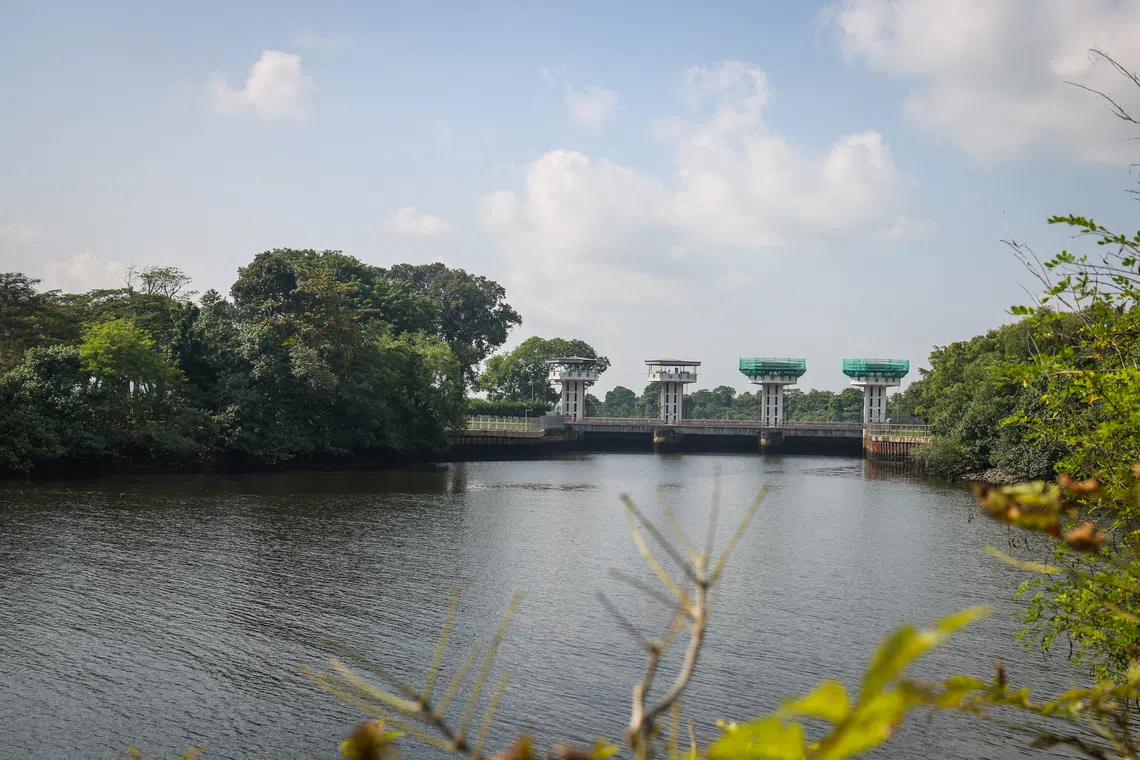
Turning the existing Kranji Tidal Gatehouse into the “Marina Bay Sands of Sungei Buloh” was also among the suggestions.
ST PHOTO: JASON QUAH
Follow topic:
SINGAPORE – Standing at the entrance of the Sungei Buloh Wetland Reserve in north-western Singapore on Sept 27, some members of the public were “transported” 75 years into the future.
By 2100, rising sea levels could cause the coastal reserve to flood, with water levels projected to be thigh-high during extreme high tides or when there are storm surges, Mr Reza Pradana, a senior urban designer of consultancy Arup, told them.
While there have been sessions for other stretches, such as Singapore’s south-eastern shoreline,
The public engagement exercise followed earlier efforts by national water agency PUB to study the coastline, which extends from Lim Chu Kang to Woodlands.
The study, which will recommend coastal protection measures for the 15km stretch, began in August 2023 and is expected to be completed in the next one to two years. The public input will contribute to the study, which Arup has been commissioned to do.
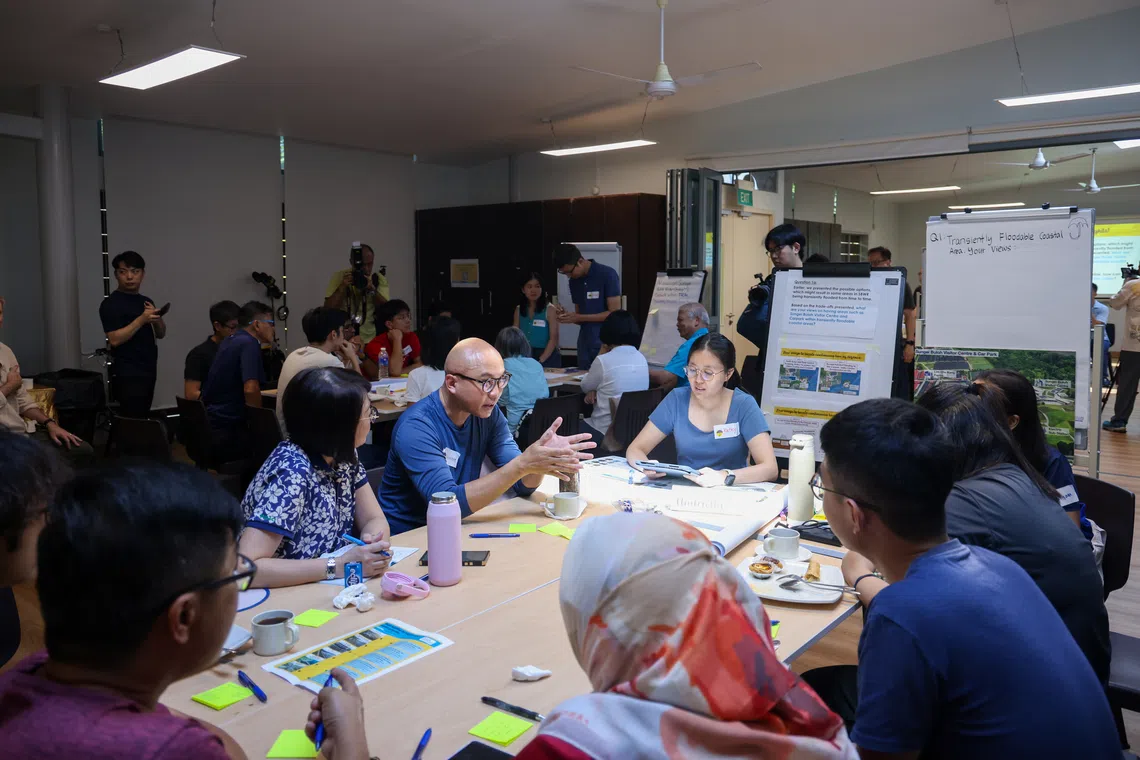
Our Coastal Conversation participants during group discussions on Sept 27.
ST PHOTO: JASON QUAH
The stretch of coastline features landmarks such as the future Sungei Kadut Eco-District that will create industrial space, the Woodlands Checkpoint and biodiversity-rich areas like Sungei Buloh Wetland Reserve and the upcoming Mandai Mangrove and Mudflat Nature Park.
As part of the session, participants went for a site walk at the wetland reserve and other nearby landmarks, such as the Kranji Dam and Tidal Gatehouse, before they shared ideas on how the coastline can be better protected.
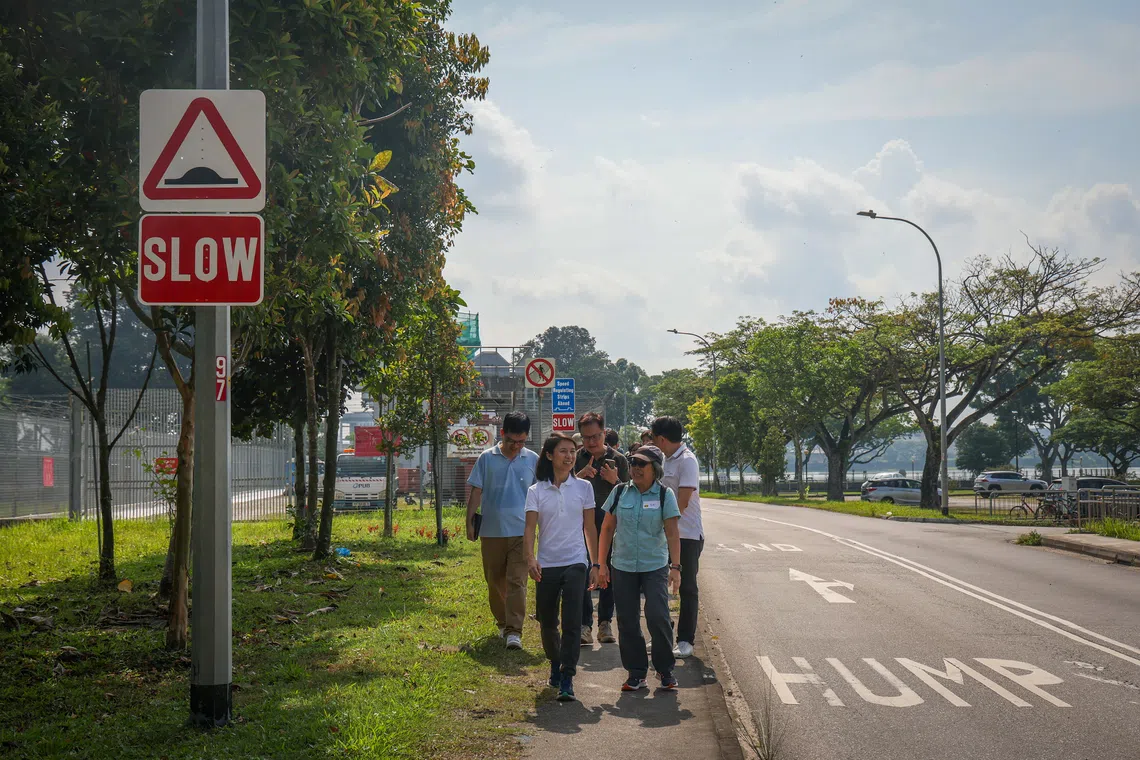
Ms Goh Hanyan (foreground, left), Senior Parliamentary Secretary for Sustainability and the Environment and Culture, Community and Youth, joining participants on the site walk on Sept 27.
ST PHOTO: JASON QUAH
Ideas presented included building footpaths and cycling paths across the Kranji Dam, which was built in 1975 across the mouth of Sungei Kranji to prevent seawater from entering Kranji Reservoir.
Others suggested introducing water taxis for eco-tours and turning the existing Kranji Tidal Gatehouse into the “Marina Bay Sands of Sungei Buloh” by conserving its iconic towers and joining them with a viewing deck.
Participants also discussed a solution floated by PUB, which is for the Sungei Buloh area to be allowed to be temporarily flooded during extreme weather events.
These transiently floodable coastal areas may render the area off-limits during certain periods, but can help to preserve mangroves lining the north-west coast, PUB said.
Installing hard structures such as seawalls to prevent flooding would deprive coastal habitats of access to seawater. Allowing nature areas to flood periodically was also a solution proposed for the Changi area
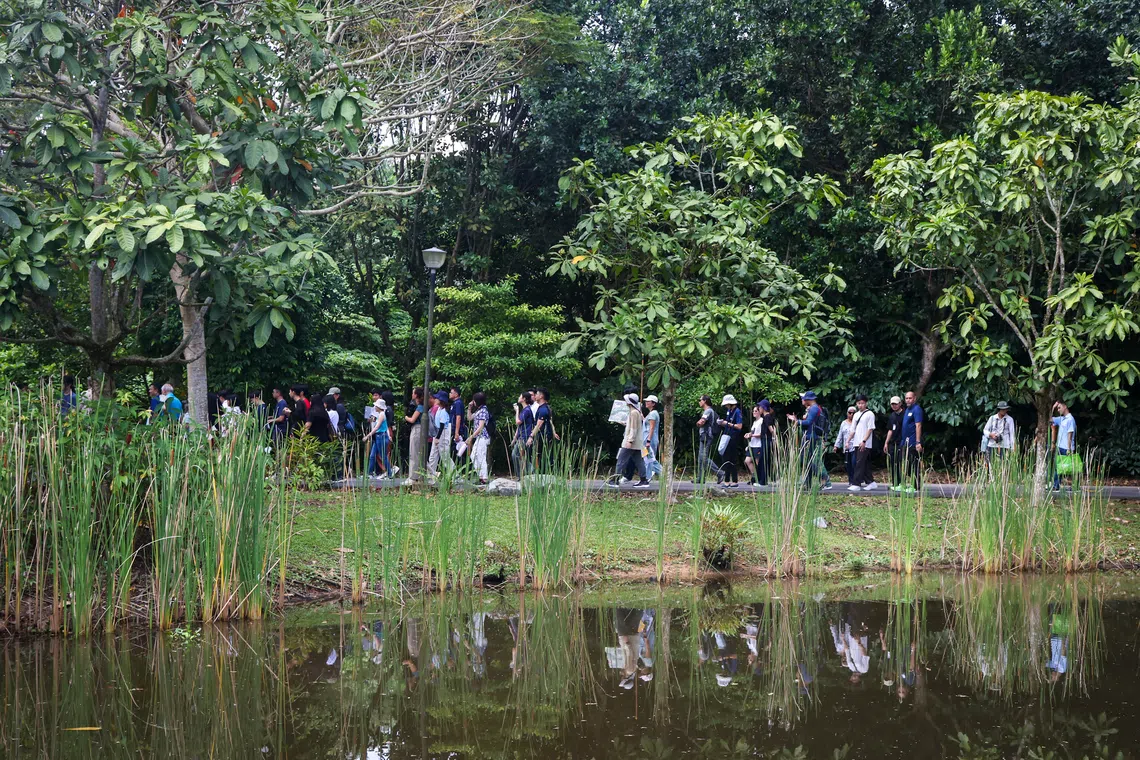
Participants on a site walk at Sungei Buloh Wetland Reserve on Sept 27.
ST PHOTO: JASON QUAH
Mr Isaac Ong, the programme head for nature group Singapore Youth for Biodiversity who attended the dialogue, said working with nature instead of working against it is ideal. The NUS life sciences student, 21, said it was a good educational opportunity. “We can bring students here, and they can have a first-hand example of what sea level rise and coastal protection is like,” he added.
The participants at the Sept 27 event hailed from communities that frequent the area, including cyclists, anglers and retirees.
Ms Goh Hanyan, Senior Parliamentary Secretary for Sustainability and the Environment and Culture, Community and Youth, also attended the dialogue.
She stressed the need to have early discussions about the trade-offs in attempting to protect coastal areas, saying: “Coastal protection is something that requires different stakeholders from all parts of society to come together because, inherently, rising sea levels affect all of us.”
For instance, one participant, Nanyang Technological University student Lim Yi Xuan, called for the coastal protection measures to consider the needs of the fishing community, to loud cheers from fellow anglers in the room.
He suggested building a floating fishing deck near the dam for people to enjoy the sea view while fishing. Mr Lim, who has been fishing in the Kranji Dam area for 13 years, told The Straits Times that the dam is a popular spot among anglers, and retaining a designated fishing ground there is important as such spaces have dwindled due to development.
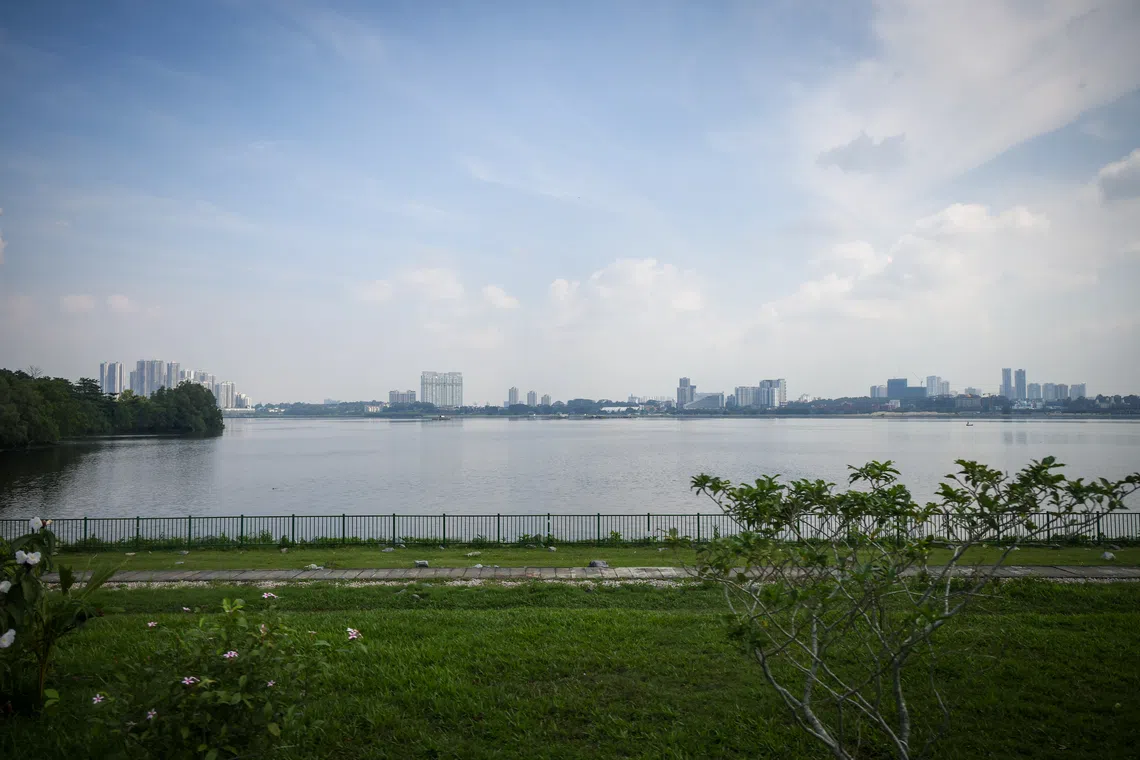
The view from Kranji Dam. NTU student Lim Yi Xuan suggested building a floating fishing deck near the dam for people to enjoy the sea view while fishing.
ST PHOTO: JASON QUAH
The reservoir is one of only a handful of spots where fishing inland is allowed.
The 24-year-old added: “As much as possible, I hope we can see an integrated solution where we wouldn’t lose the essence and ‘nature’ of the venue.”
Public engagement remains at the heart of the agency design approach, said PUB senior deputy director of coastal engineering Thoo Jung Chee.
He added: “(As plans) also include opportunities to integrate multi-functionality, it is important that we seek the views and feedback from our community and stakeholders on the potential measures and trade-offs.”
Arup associate principal Peter Stones noted that the public engagement session had reinforced the need to sensitively manage the unique ecological and community value of Sungei Buloh Wetland Reserve and the Mandai Mangrove and Mudflat.
“This focus will shape our strategies, with impacts on nature forming a key criterion in our decision-making processes,” he said. “We aim to embed nature-based solutions that not only strengthen flood protection for developments, but also enhance biodiversity and ecology across the district.”
Mangroves play a vital role in Singapore, naturally absorbing wave energy and reducing the impact of floods on inland areas, he added.
The consultancy said it will assess the options proposed for the area based on key factors, including cost-effectiveness, social aspects and their effectiveness in flood protection.



